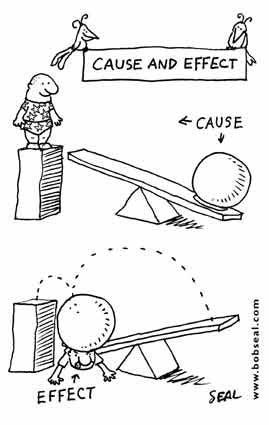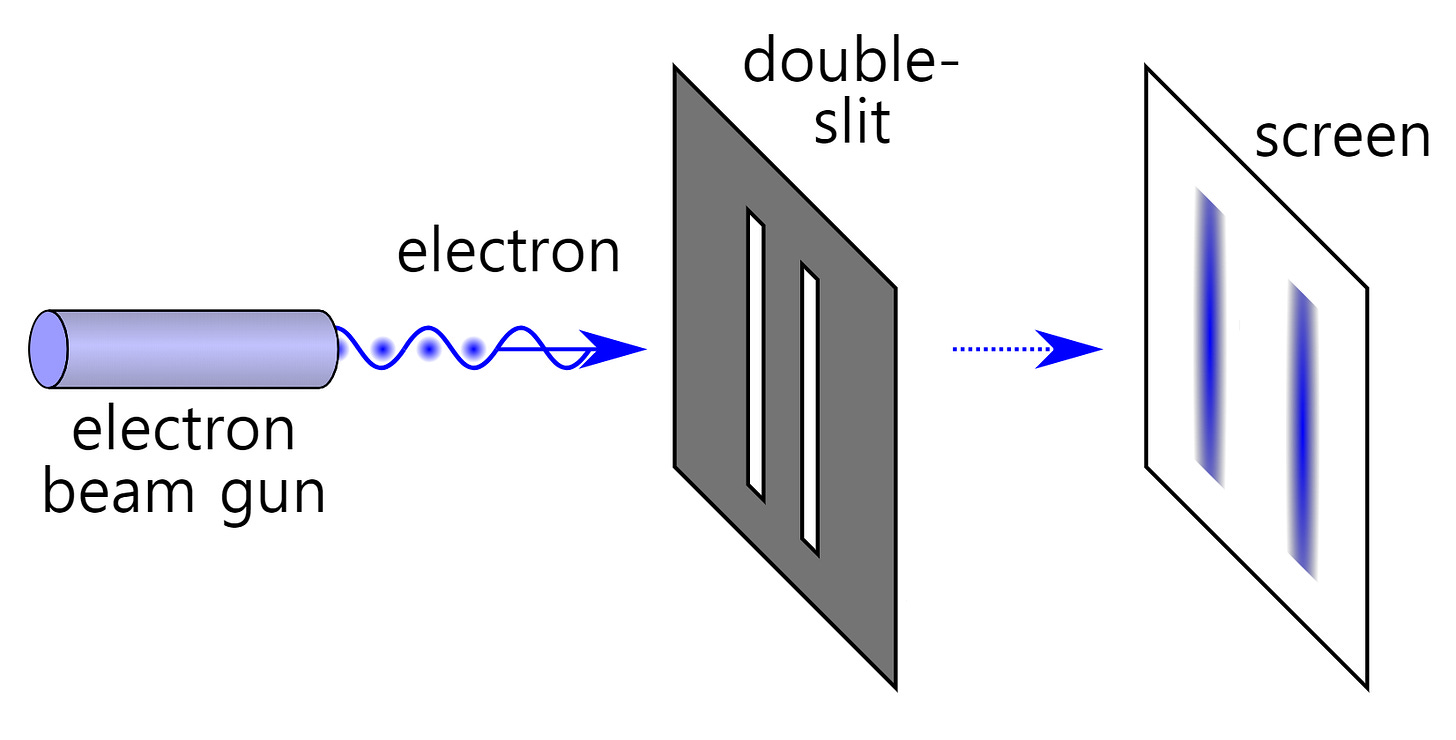Simulation Theory pt 2
Video game rendering and quantum physics. Where things start to get weird and reality doesn't make sense.
Physicist Michio Kaku claims the simulation theory is wrong because it’s impossible to simulate an entire universe based on the required computing power. He gives the weather as an example. To replicate weather, one must simultaneously simulate trillions of atoms interacting in a web of complexity. This would be impossible for Earth, let alone for the trillions of other planets.
He’s right! No computer in the world could come close to simulating the weather system of every planet in the entire universe. Even in video games, we don’t bother simulating the whole game, only parts.
Oh, wait a minute.
That’s the answer.
You don’t simulate the entire universe.
How do video games work?
In a computer-generated world, only the bare minimum is rendered. There’s no need to load the entire map at once, only whatever the player can see or interact with. It would use an enormous amount of memory to render the interior of everyone’s home when the player is on the other side of the map.
This is precisely what we would expect to see in our world if we were a simulation. A home that no one is in wouldn’t render until someone enters it. Space-saving code would be implemented when no one is home. The second someone peaks inside is when it loads. So all the trillions of atoms creating the weather need not be rendered until someone decides to observe all the atoms. We only see the clouds move, the sky darken and the falling rain. The process doesn’t ‘happen’. The result happens.
Another seemingly obvious rebuttal to Michio’s point is he seems to be basing his assumptions on our current computational power. True. However, simulation theory isn’t based on our current level of technology, it’s based on a future civilisation with a higher technological maturity. This was like saying we could never create vast open-world games at the time of the original Pacman.
Humans of the future will have access to quantum computers more powerful than we could ever dream. It is bizarre for someone of his intellectual calibre to make this argument because the thought process behind it is so obviously constrained.
Now, let’s step away from all this for a moment. If you don’t buy what I’m saying - that’s fine. But stay with me for a bit and see if this logically tracks with the idea that we might live in a simulation.
You don’t have to believe, but ask yourself if it makes sense.
What does Pluto look like?
Before we had telescopes, according to simulation theory, it didn’t exist. Well, it existed, but it wasn’t rendered. When Clyde Tombaugh peaked through his blink comparator in 1930 he saw the faintest blip of light. That was Pluto. 100 years ago, it was literally a dim light suspended in space - there was no need for a highly detailed surface with mountains, vast plans and cryovolcanoes because we couldn’t see it. It was nothing but a simplistic rendition of what was to come. Then in the 1990s with the help of the Hubble Space Telescope, it got a visual update, still not to the level of detail we see today, but an update nonetheless. Remember, only the bare minimum is rendered until we can see it better, so in 2015 when we got a clearer picture of it, it was updated again.
Similarly, in a big open-world game you can see the outline of mountains, the intermediary hills, and the shades and colours of the grass. However, all the trees, animals and everything more detailed won’t be rendered until you get closer. It ‘exists’ but it doesn’t exist to you until you get closer. This is all done to help save computing power.
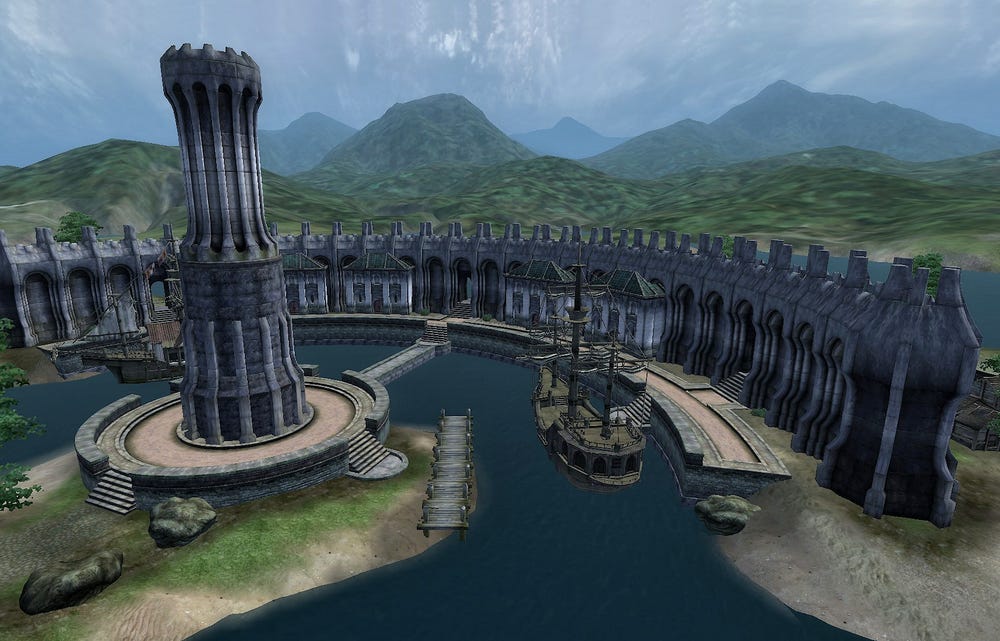
So is Pluto a blur, or a beautiful, multicoloured frozen landscape? It’s both. Depending on what instrument you use to look at it. The bare minimum will always be rendered.
You might be tempted to extend this logic to something a little closer to home and I encourage you to do that. Instead of looking at something so distant, we can instead cast our gaze downward. What’s beneath us? Simulation theory states that nothing is until we start digging. You only render what’s in the ground when it’s needed.
So, let’s do that.
We start digging and find an ancient artefact, it looks like the bones of an animal. When did these bones first get there? The answer must be some time in the past.
We look at time in the view of cause and effect. For something to happen, there must be a preceding cause. One before two. A before B. That means for us to be here, billions of years of solar system creation and evolution had to take place. Yet according to simulation theory, this wouldn’t have happened due to the impractical nature of simulating all the moving parts.
OR, how about this? To save memory and computing power, the past was created because of what you did in the present. As in, the only reason the bones are there is because you started digging.
But, whatever - that’s crazy talk. We know the present cannot affect the past, time doesn’t work that way. It marches forward in one direction only. So why am I bringing this up?
Our intuitive understanding of time is wrong, and we know this. The present does change the past.
The past is created on demand.
Welcome to the Double Slit Experiment
The double slit experiment is a two-part fascination. Let’s start by exploring how light (photons) behave.
Photons exhibit both wave-like and particle-like behaviour. Think of a particle as a small, physical ball of energy - like a tennis ball. It can only move in a straight line and exists in a specific spot, making it observable. A wave, however, is a bit more discrete. Think of it like a ripple in a pond. It doesn’t exist in one place like a particle but spreads out over space.
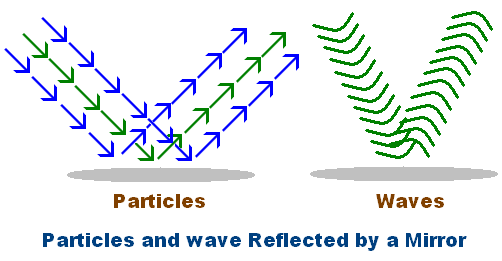
During the Double Slit Experiment, light is fired toward a screen leaving a temporary mark where the photon lands. Before the photon hits the screen it randomly passes through either one of the two slits. A measuring device called a photon detector is set up to observe which slit it passes through. After repeated firings of photons, a pattern emerges on the screen showing where they land.
When photons are continuously shot through the slits while being observed you’ll get the pattern you see below. It’s like throwing multiple tennis balls through the two gaps.
However, if we fire photons through the slits with the measuring device turned off, the pattern on the screen changes. We call this an interference pattern. The only way for the interference pattern to happen is if the photons act as a wave.
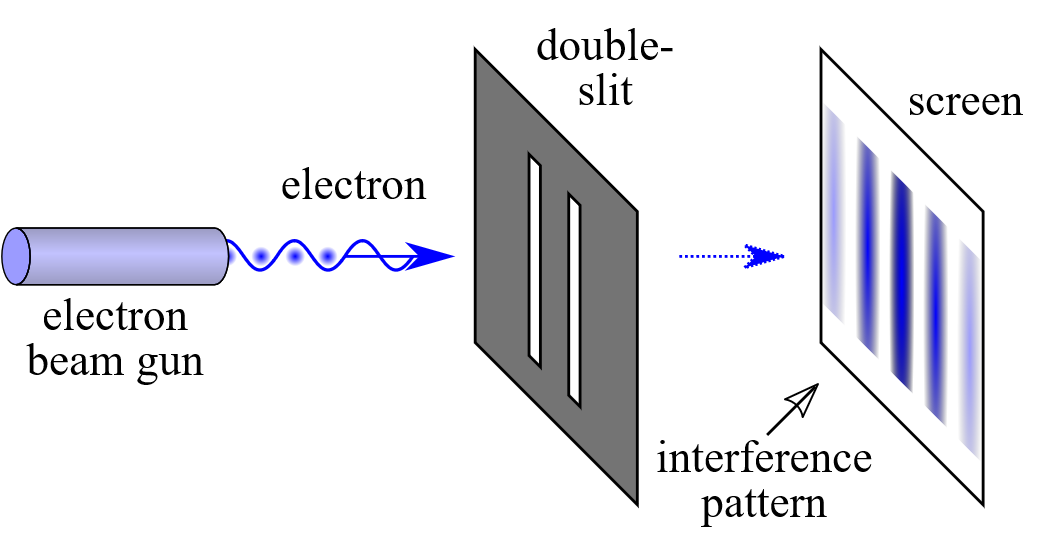
When we observe light it acts as a particle, when we don’t, it acts as a wave. The fundamental properties of light change depending on whether we look at it or not—in other words, light knows when it is being watched.
Quantum mechanics is weird.
But it’s going to get weirder.
Now Comes the Delayed Choice Experiment
The experimenters took this one step further. We’ve never observed light acting as a wave, we only infer this because of the interference pattern it leaves on the screen. Well, these smart fellahs tried to ‘catch’ the photon acting as a wave by switching on their measuring devices while the photon was acting as a wave.
It sounds simple, right? The photon is fired toward the screen as a wave, they switch on their measuring device and see it as a wave for the first time.
What was discovered challenged our understanding of cause and effect and time itself.
This is called the Delayed Choice Experiment.
So the emitter fires a photon, and it is assumed it acts as it usually does when it’s not being observed - as a wave. They switch on the measuring devices and what do they see? Particles.
This is huge.
The light left the emitter as a wave, and when it was observed, it retroactively changed its past self into a particle. I guess that means time travel is real and the present changed the past. An alternative explanation is the photon knew someone would look at it and it pre-emptively acted as a particle. So light, something without a brain and consciousness, either knows the future or can change the past.
Thus, at least in the quantum realm, actions in the present affect what happens in the past.
Maybe this only applies to the quantum level and not to the level of reality which we engage with. However, we would expect to see the past being created on demand if this were a computer simulation. And we have proof that this does happen in reality.
So is this proof we live in a simulation? No. That’s the funny thing about this, you’ll find many of the arguments for simulation theory fit what one would expect if we were in a simulation while also if we were not. It fits both hypotheses.
Is this a case of contorting the facts to fit a preconceived conclusion? You decide.



